It’s about finding a diamond that not only captivates the gaze, but aligns with your heartfelt values and concern for the world.
SPECIAL NOTE: With Russian diamonds flooding the market and endless greenwashing from the industry, we understand the need to cut through the BS to understand the ethics of your diamond choice. SPOLIER ALERT: the answer is not as straightforward as choosing lab grown! Read on for more. Then, if you have any questions, email me at info (at) reflectivejewelry.com, or call our shop at 888-733-5238. —Kyle Abraham Bi, Owner + CEO
Updated 7/22/25
If you are in the market for an ethical diamond, this article provides the most essential information you need to make an informed choice.
This is an in-depth “pros and cons” bullet-point comparison — a perspective from an activist jeweler on manmade diamonds vs. mined diamonds from someone who pioneered the North American ethical jewelry movement fifteen years ago and currently writes feature articles on ethical issues for Canada’s top trade magazine.
What’s different about this article is:
Some of the information I provide other jewelers would never reveal — because, for the cutthroat diamond industry, it’s all about sell, sell, sell.
So, here’s the deal:
You’ll get an insider’s perspective of four different options: diamonds from the open market, Canadian mined diamonds, lab grown/created diamonds, and recycled diamonds.
PLUS: we'll also cover the popular diamond simulant Moissanite.
Lastly, I’ll provide critical background info that will complete your ethical diamond understanding — as well as many internal links that can lead you into an even deeper understanding.
One more thing... you if have additional questions or just want some general advice, you can always email me at info (at) reflectivejewelry.com or call our shop at 888-733-5238.
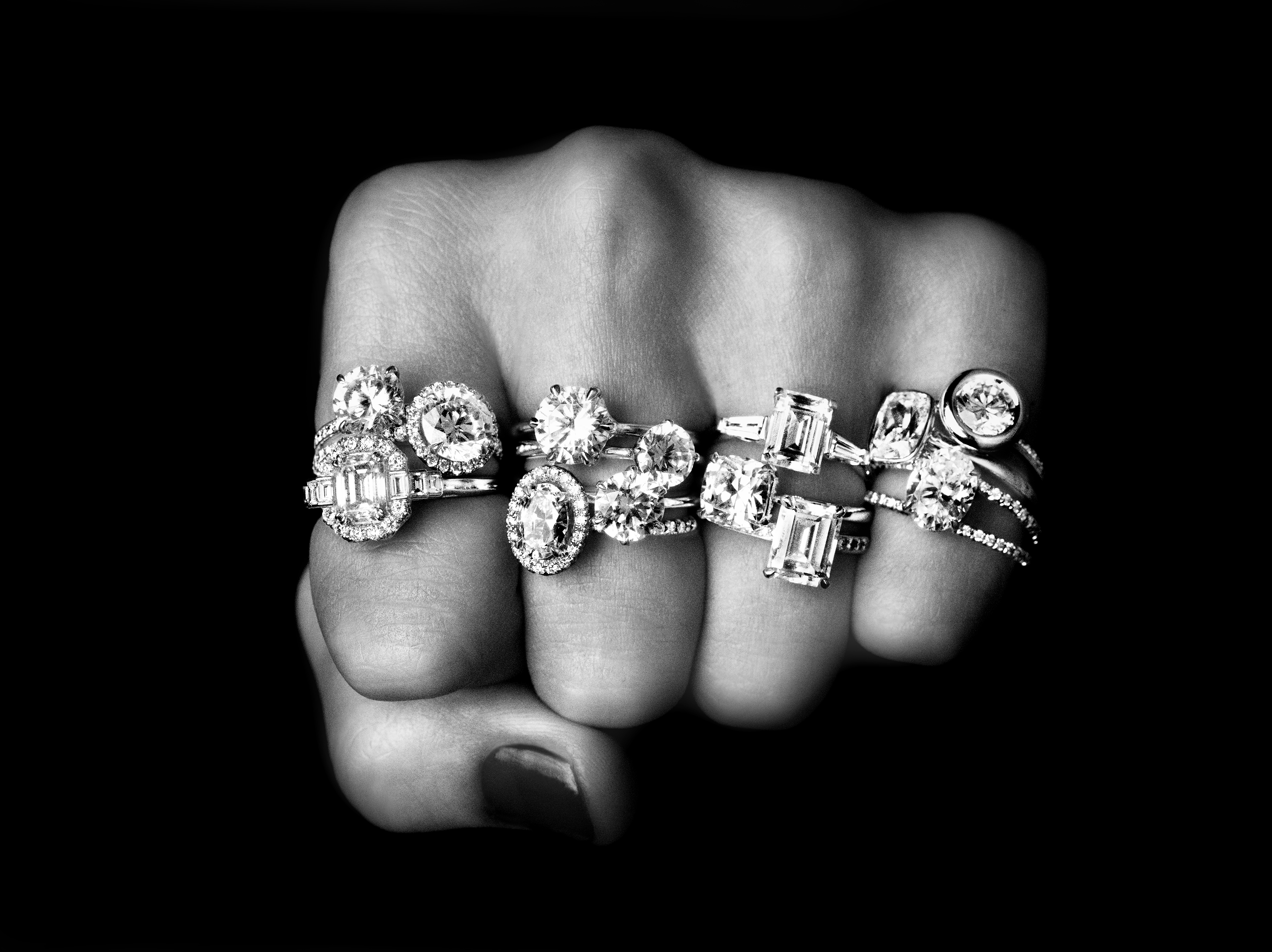
Let’s start with the average diamond, which you can buy by simply searching for “diamonds” on the internet.
No doubt you will see the term “conflict free.” But should you be satisfied with the ethics of “conflict free?”
Diamonds Purchased on the Open Market
On The Upside
- Price. The open diamond market is a cutthroat race to the bottom.
- If you really want to price shop, Google the certification number — because jewelers often pull from the same database. Then, haggle.
- This diamond will be “conflict free.”
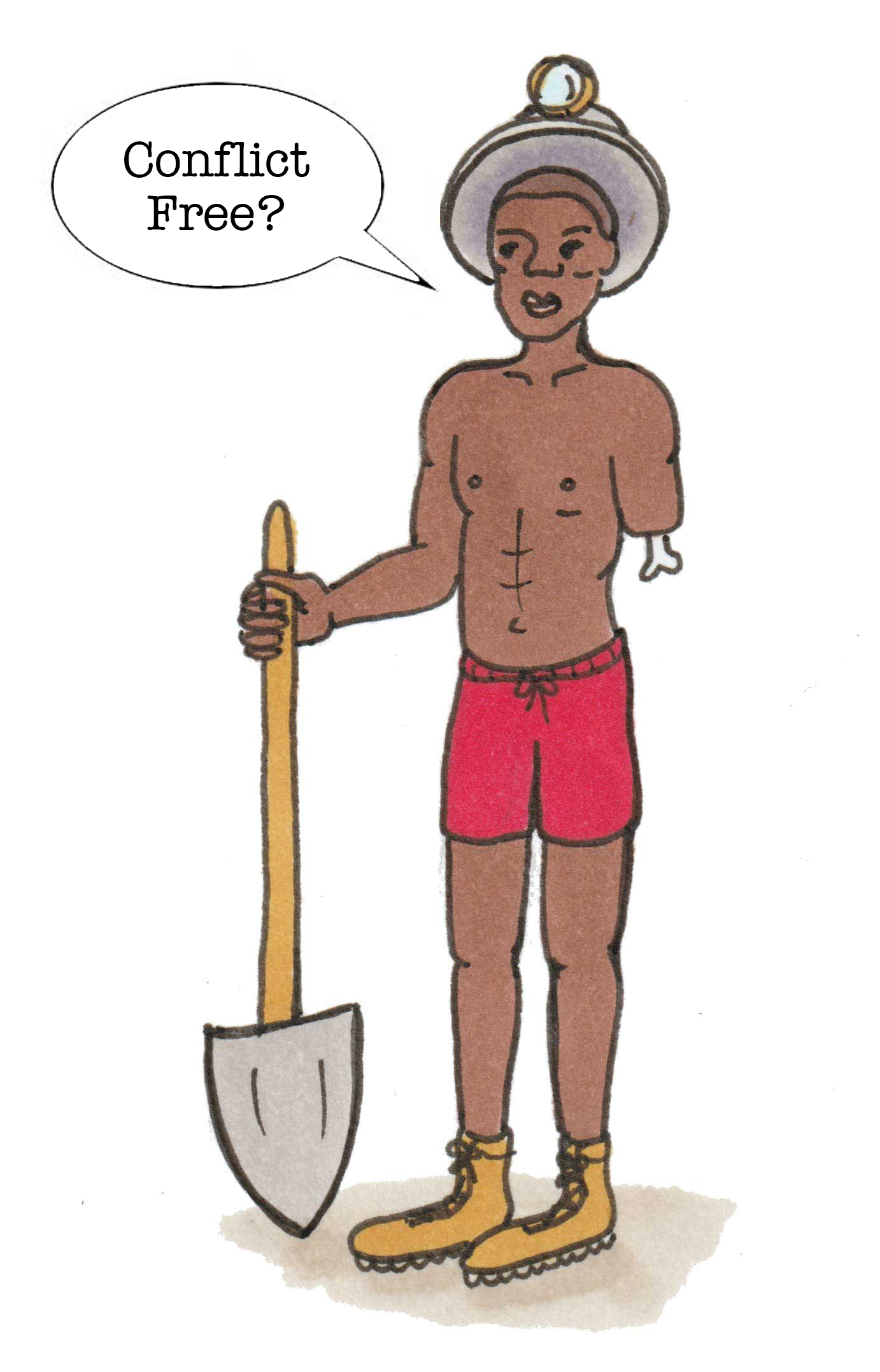
Drawbacks
- Shopping for a diamond online typically undercuts your local jeweler who can’t compete with large companies — thereby negatively impacting your local economy.
- “Conflict free” assurance is bullshit. If you dig deep into the Kimberley Process, it bypasses human rights and environmental atrocities, functioning less as a “conflict free” certification than as a cover-up for atrocities.
- About 90% of diamonds are cut in Surat, India, where there are an estimated 100,000 child laborers who work — many of them are fired once they've lost their ability to see up close.
- You support elements of the diamond industry that got away with funding wars that killed millions of Black Africans because their lives didn’t matter.
- 20% of diamonds come from small-scale miners who live in extreme poverty and exploitation.
- You have a roughly 30% chance of buying a diamond that came from Russian mining giant Alrosa. As of the time of this writing, the US sanctions in place are completely ineffectual, and do not prevent Alrosa's diamonds from freely flowing into the US. So, your purchase may be funding the killing of Ukrainians. (Alrosa also has direct ties to Russia's nuclear weapons program.)
But here’s the most essential point:
You will have no idea where this diamond was mined, cut, or polished.
Let’s compare this situation to Canadian Diamonds:
Canadian Diamonds
On The Upside
- The Canadian government has strict environmental and labor standards.
- Canadian diamond companies have Impact Benefit Agreements with First Nations groups. That means that tribes get a small royalty and sometimes mining jobs.
- Diamonds are etched with the Canada Mark, assuring traceability from mine to market.
- The Canadian brand has no association with massively corrupt global diamond supply chain. There’s no illegal black market Canadian diamond trade.
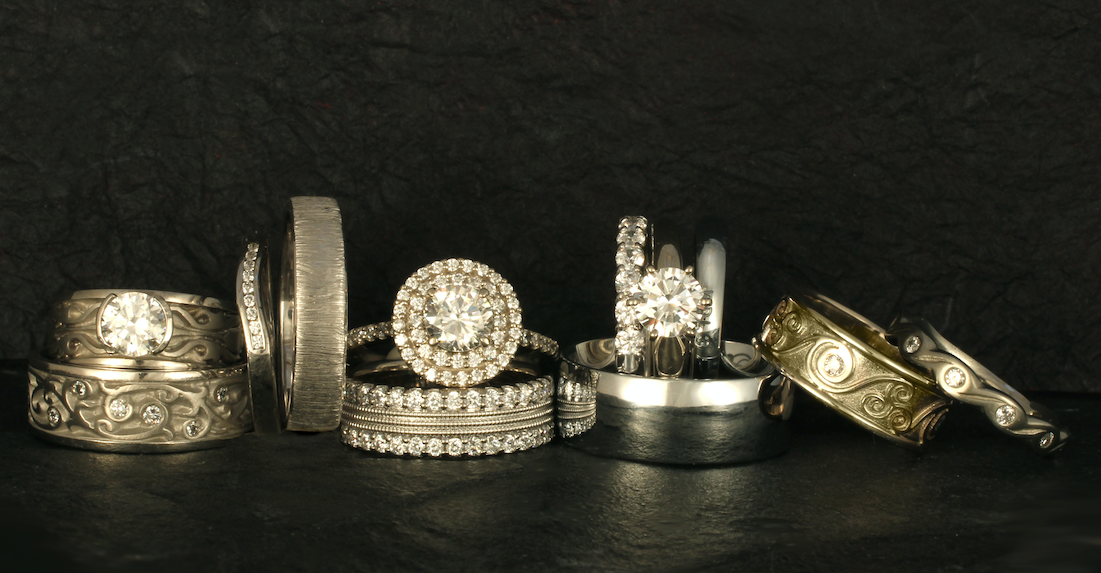
We feel Canadian sourcing is the best mined diamond choice for our custom-designed Fairtrade Gold wedding rings and Fairtrade Gold engagement rings. We are the only Fairtrade Gold jeweler in the USA.
Drawbacks
- The mines have a huge regional environmental impact and a huge carbon footprint in one of the most pristine environments in the world. The great caribou herds were struggling even back in 2009, when I conducted this interview.
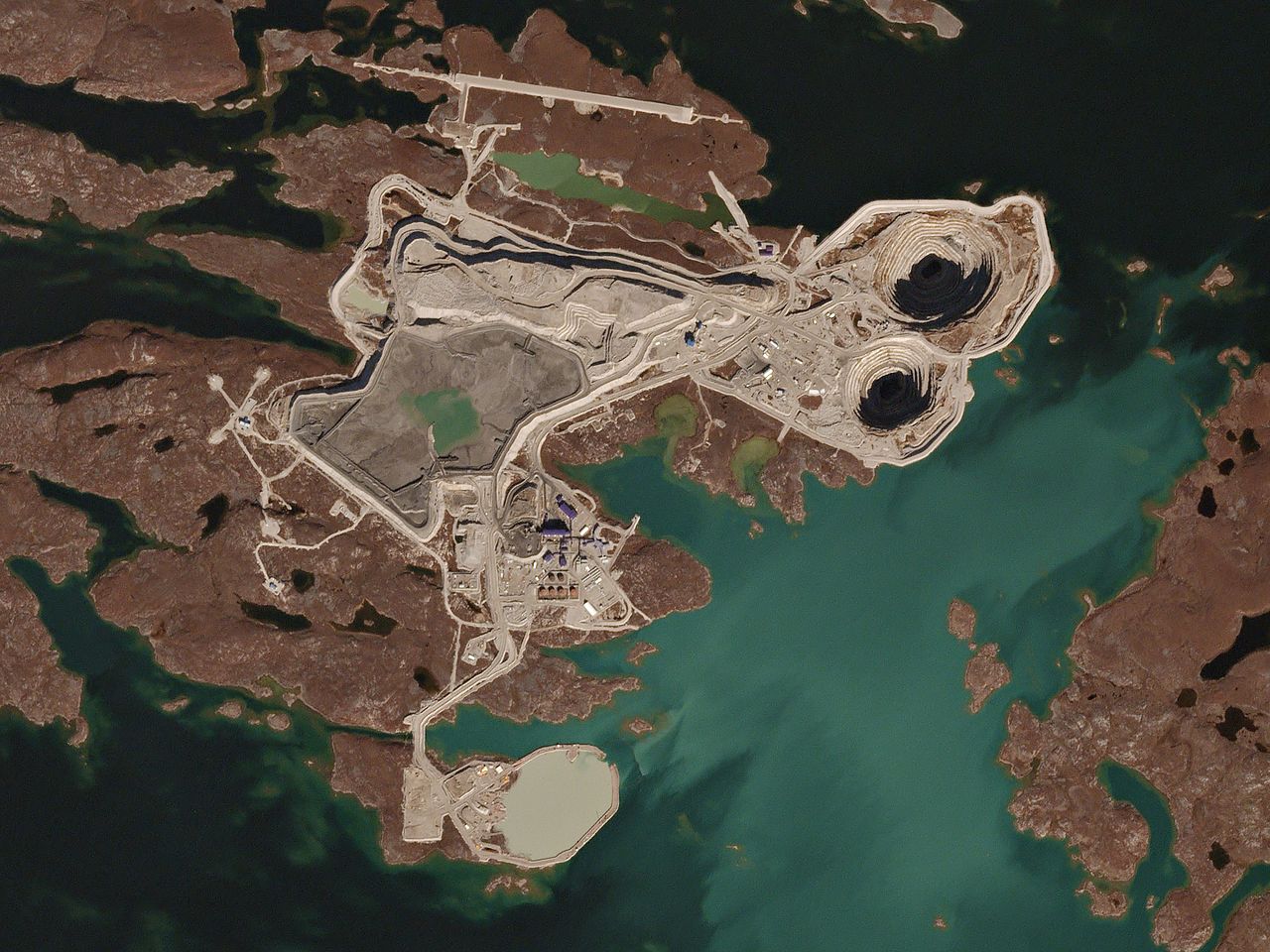
The Diavik diamond mine in Canada. Photo credit.
- Many First Nations People who signed Impact Benefit Agreements view these agreements as inadequate. The high-paying jobs promised did not materialize
- In that context, De Beers also has a mine in Canada which has been the subject of blockades, as I wrote about in this article.
- Choosing a Canadian diamond bypasses a critical issue: African countries with diamond resources benefit from diamond sales. Canadian diamond miners make in a day what Africans make in a month.
- Canadian diamond suppliers often will not reveal where diamonds are polished.
Even with the drawbacks, when a customer comes to my store looking for a diamond for their Fairtrade Gold wedding ring, we explore the options on my Canadian diamond database.
There are other options where retailers offer diamonds traced back to source: particularly Alrosa, in Russia, which is owned by Russian oligarchs — friends of Putin.
Also, there’s Botswana and Namibia diamonds sourced from the De Beers supply chain. Typically, when "ethical jewelers" source from De Beers, they don't mention De Beers but only the country of origin. De Beers supplied about 90% of the world’s diamonds during the blood diamond wars in the 1980s and ‘90s that killed 3.7 million people — though today their market share has fallen.
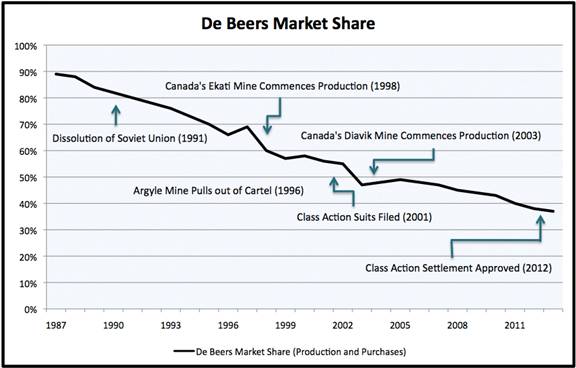
Source: WWW International Diamond Consultants Ltd, Economic Times of India, and Paul Zimnisky analysis.
But here’s the bottom line:
Though I recommend Canadian diamonds, (from non-De Beers mines) in a perfect world they would not be my first choice. My first choice does not exist.
Here’s why:
The ideal ethical diamond — one based on fair trade principles that would create regenerative local economies for small-scale miners — is not available in the market.
To really understand ethics and diamonds in mined vs lab grown, we have to consider diamond sourcing from a broad perspective.
Apart from the major market disruption caused by lab grown diamonds, which I explore below, natural diamond sourcing has hardly changed since the blood diamond wars were exposed in the late 1990s.
But it gets even worse:
Blood Diamonds were seen by De Beers as reported by the New York Times in 2000, as a great marketing opportunity.
Since the issue of blood diamonds originated with diamonds that small-scale miners dug to sell to De Beers to fund wars, De Beers and other large diamond companies could own the “responsible” sourcing chain simply by only purchasing diamonds from within their own large mine supply chain.
Most people think about mining in terms of huge multinational companies and massive equipment — which comprises 80% of diamond sourcing.
Yet there 1.5 million small scale diamond miners producing approximately 20% of the world’s global diamond supply. Most of these miners work in extreme poverty, making a dollar or two a day even today.
The big difference between these miners and miners working for large diamond multinationals is this: for the small-scale miner, it’s about survival and feeding one’s family; while for the large-scale operation, it’s about profit for shareholders.
Despite all the talk of ethical diamonds, the lives of the vast majority of small-scale diamond diggers, such as those from Sierra Leone shown below, remain unchanged.
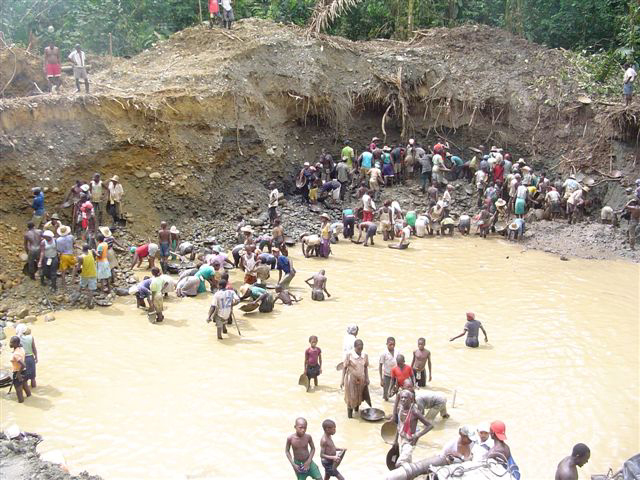
Small-Scale diamond miners in Sierra Leone work for a few dollars day. Photo by Greg Valerio.
Many of these small-scale diamond communities suffered from the blood diamond wars which killed 3.7 million people.
There was never a process for truth and reconciliation for diamond-funded wars. Nor have any of those in the diamond world who have funded those wars ever been held accountable.
For all those killed in the blood diamond wars, diamonds were a kind of strange fruit:
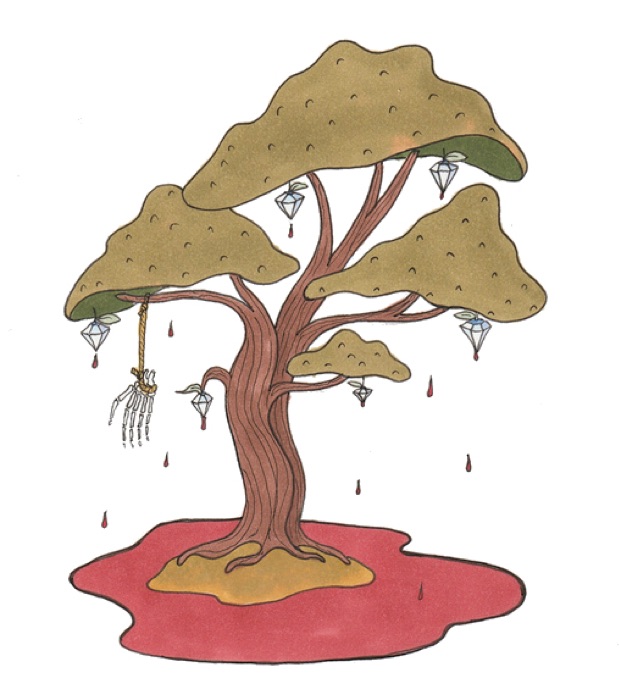
Without restitution to impacted communities, and accountability to those complicit in the diamond wars, any talk about an “ethical” and "conflict free" diamond narrative rings hollow.
In my view, the term “conflict free diamonds” should be torn down like monuments to confederate generals.
Many of my customers these days are repulsed by the thought of any involvement in the natural diamond industry. It’s understandable why for many searching for diamonds, lab grown is a great choice.
Lab Grown Diamonds
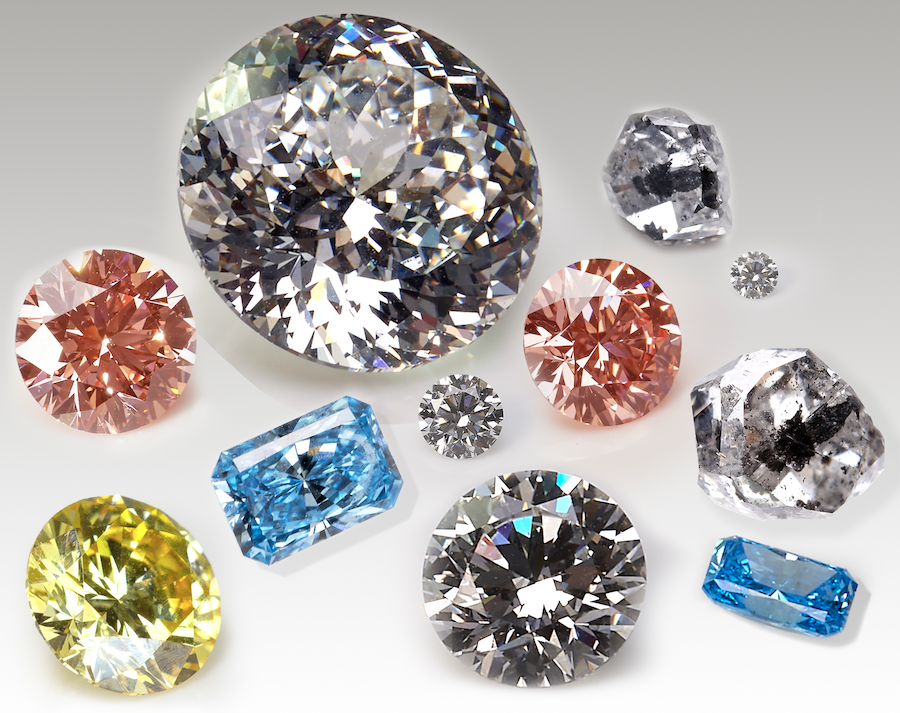
At present, a 1ct brilliant round lab grown diamond can be had for about 25% the price of a natural stone — with better specs! And, new to the market, colored lab grown diamonds undercut their mined counterparts even further.
On The Upside
- PRICE!!! When comparing lab grown diamonds vs mined diamonds, lab diamonds are typically around 70% less expensive.
- There’s no issue of the diamond coming from black market or “conflict” sources. No conflict, no human rights violations, no child labor in the mine.
- Lab grown diamonds are chemically, optically, and physically identical to mined diamonds. Even to trained experts, they are sometimes entirely indistinguishable from mined diamonds.
- Using a lab created diamond means that your diamond did not contribute to the impact of mining.
Drawbacks
- Because the lab grown diamond industry is growing rapidly, there’s no guarantee that a lab grown diamond will hold value. On the other hand, the average diamond purchased at a jewelry store isn’t a great investment either.
- Lab grown diamonds in jewelry have no impact on current diamond mining practices worldwide.
- Choosing a lab grown diamond bypasses a critical issue: African countries with diamond resources benefit from diamond sales.
- If you are someone who feels connected to the energetics of gemstones, an earth created diamond has more appeal than a lab created diamond.
- Lab grown diamond manufactures are springing up like weeds. They can still use child labor in polishing. And, creating diamonds in a laboratory requires tremendous amounts of energy. Where this energy comes from should be a key consideration.
You might be wondering:
Are lab grown diamonds more “eco-friendly” than mined diamonds?
In short, it depends. It depends on the specific lab grown and mined diamonds you’re comparing — including where they originated.
For example, there’s a huge difference between a small-scale African miner finding a diamond in the dirt versus a full-on industrial operation that exists in the Northern territories of Canada.
In order to really know the impact of your diamond, you have to determine its sourcing — which, in our last option, Recycled Diamonds, is not possible.
Recycled Diamonds
On The Upside
- Recycled diamonds are purchased from scrapped jewelry either in our shop or from other companies. Sourcing requires no additional mining.
Drawbacks
- Recycled diamonds are basically the same as what I described above when discussing diamonds purchased on the open market: black market, child labor cutters. Just because it happened a few years ago doesn’t mean it didn’t happen.
- Recycled diamonds in jewelry have no impact on current diamond mining practices whatsoever.
- There's no way to determine where the diamond was actually originally mined. A recycled diamond can be a conflict diamond.
- Choosing recycled diamonds bypasses a critical issue: African countries with diamond resources benefit from diamond sales.
Moissanite: A Diamond "Simulant"
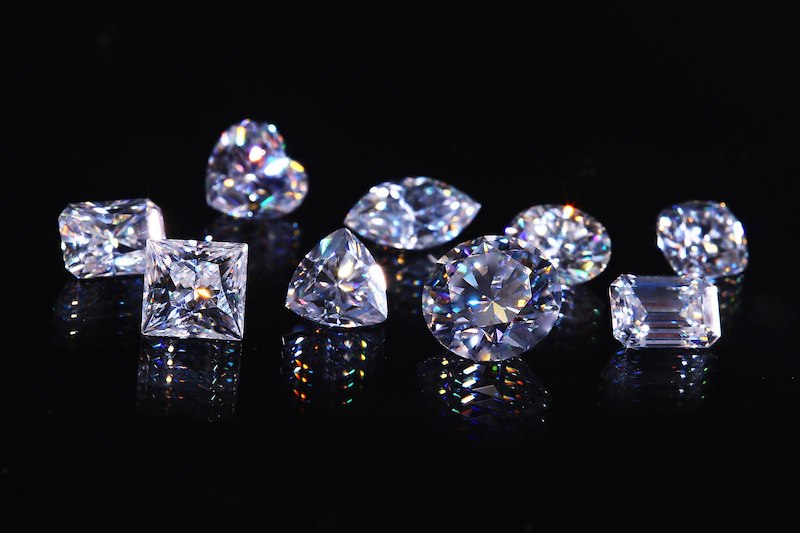
A sampling of Moissanite gemstones. Photo credit.
While often referred to as a diamond "simulant," moissanite is in reality a beautiful gem in its own right. It's sometimes been referred to as "stardust" or "space diamond," as it was first discovered in a meteorite deposit.
But here's what you need to know:
On the Upside
- Moissanite is almost exclusively lab grown for use in jewelry, as it's extremely rare on Earth. This means that, like lab grown diamonds, moissanite does not contribute to "conflict" or mining.
- In terms of appearance, moissanite is very similar to diamond. The Moissanite we offer is DEF color, meaning it is considered colorless. Moissanite is also more "brilliant" than diamond — meaning it has a higher refractive index, and is more "sparkly" and emits more "fire."
- Durability: at 9.25 on the Mohs scale, moissanite is between the hardness of sapphire and diamond — making it more than durable enough for an engagement ring.
- PRICE! Moissanite is by far the cheapest gemstone option discussed on this page.
Drawbacks
- Like lab grown diamonds, moissanite has no impact on current mining taking place.
- Like lab grown diamonds, choosing moissanite provides no benefit to African diamond mining communities.
- Like lab grown diamonds, the source of the energy used to create moissanite is a concern, as are labor conditions for cutting and polishing.
- It's not a diamond. So if this is really important to you, moissanite may not cut it. Plus, energetically, you may prefer a natural stone over one that's lab grown.
-
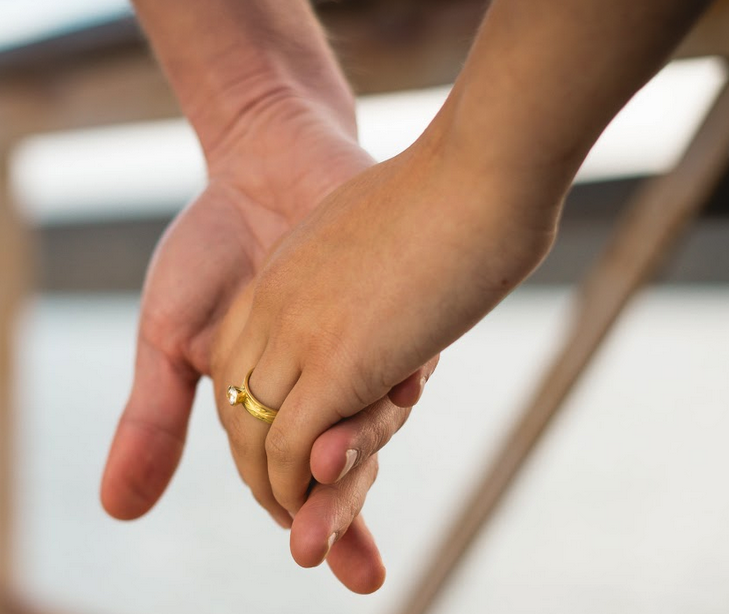
At the end of the day, it's about you and your relationship. The answers are not the same for every couple, but we hope some of the info provided here has helped.
Our Recommendations for Ethical Diamond Sourcing
The basic first step to understanding diamond sourcing is to forget terms like “ethical” and “conflict free.” Instead, determine who owns the source and where the diamonds are polished.
This basic rule of tracing the supply chain also applies to colored gemstones, though like diamonds, often it is not possible.
We are the only Fairtrade Gold jewelers in the entire USA — though in the UK alone, there are over 300.
Fairtrade Gold is a far better source for your ring than recycled gold. Recycled gold is greenwashing.
We source center stone diamonds from two sources that are offered on databases on our website: Canadian and lab grown.
If you want more information about anything to do with ethical sources, or are interested, be sure to contact us.
PS: One more thing: what did you think of this article? Please leave a comment!
Kyle Abraham Bi, Owner and CEO of Reflective Jewelry, was an inaugural recipient of the Black in Jewelry Coalition x GIA Distance Education Scholarship — as well as a signatory of 2020’s BIPOC Open Letter to the jewelry industry. He has functioned as a representative for North American jewelers to the USAID Zahabu Safi (Clean Gold) Project, appeared as a featured speaker at the Chicago Responsible Jewelry Conference, and is a regular feature writer for Jewellery Business Magazine. He serves on both Ethical Metalsmiths’ Advisory Council and Action Coalition, and is an Editor and Author for their blog The Source. Kyle holds a BA from Brown University in Contemplative Studies, and is a Graduate Gemologist. He can be reached at kyle (at) reflectivejewelry.com.